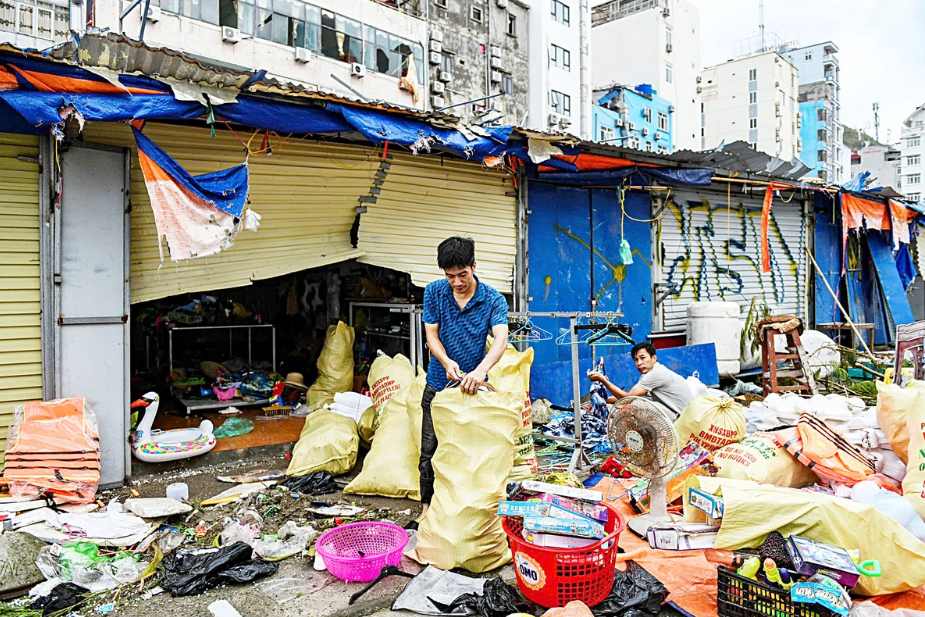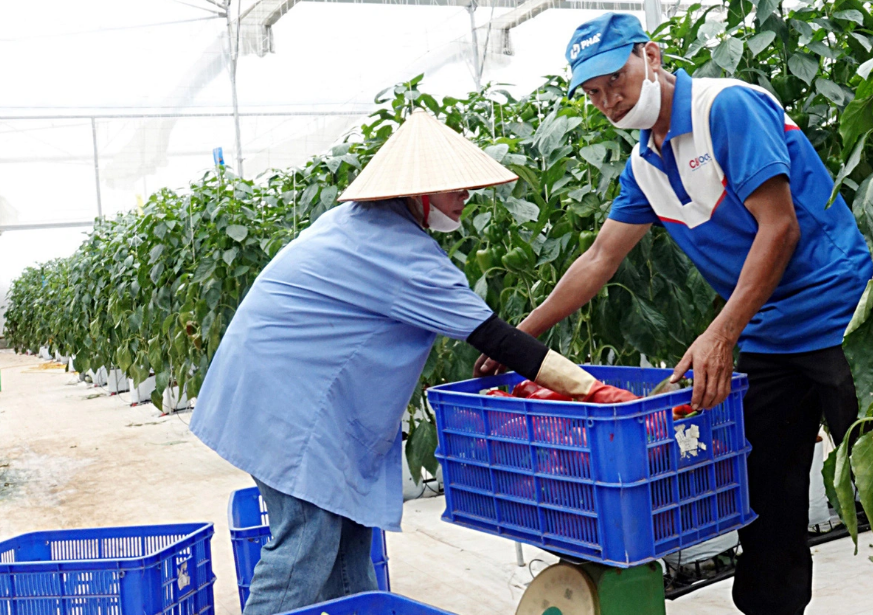Vietnam is ramping up goods production and transport to the northern region to tighten control over price spikes amid the severe impact of typhoon Yagi, the third storm to hit the Southeast Asian nation this year.
Yagi made landfall in the region on September 7, having caused an estimated loss of US$2 billion, possibly lowering the country’s 2024 GDP growth by 0.15 percentage points from the earlier forecast rate, according to the Ministry of Planning and Investment.
The move to increase goods transport was also aimed at driving up sales for firms in southern Vietnam from now until the end of the year.
Multiple major retail chains, including Saigon Co.op, WinCommerce, Central Retail Vietnam, MM Mega Market, and AEON Vietnam, have increased the frequency of their truck deliveries to northern Vietnam by three- to five-fold in order to meet the needs of residents, according to the Ministry of Industry and Trade.
Bui Nguyen Anh Tuan, deputy head of the Domestic Markets Department under the Ministry of Industry and Trade, told Tuoi Tre (Youth) newspaper that the ministry had established a task force to conduct on-site surveys in disaster-hit areas immediately after typhoon Yagi struck. The goal was to ensure a stable supply of goods.
Despite the typhoon's severe impact on trade infrastructure, local businesses quickly resumed operations to promptly supply goods to the northern market.
Some provinces established makeshift markets as a substitute for destroyed traditional markets in order to provide a means for residents to purchase goods.
In addition, major goods distribution systems have been active in sourcing products and beefing up the volume of commodities, as well as ramping up transport from the central and southern regions to the northern part.
These efforts are meant to ensure the sufficient supply of goods and stabilize prices.
Trade agencies have been working with soldiers and police officers to bring necessities to areas that have been cut off due to flooding.
Retail chains are rushing to buy vegetables and fruits from the central and southern regions to bring them to northern localities.
Tuan stated that the ministry had directed relevant units to keep a close watch on the market and team up with producers and suppliers to tap reserves.
“The ministry has instructed suppliers to beef up goods transport and stock up on commodities, mainly food and foodstuffs, to meet the needs of residents and stabilize prices and the local market,” Tuan underlined.
The ministry has also asked market management forces to enhance inspections to promptly detect and penalize individuals and organizations who take advantage of the fallout of Yagi to hoard goods and overcharge residents.
Moreover, the ministry has made it a priority to ensure power to fuel floodwater pumps.
Abundant supply of goods
Huynh Phuong Trinh, deputy general director of International Mix Joint Venture Company, stated that the company produces around 60 metric tons of cake mix daily, with a monthly capacity of up to 1,000 metric tons.
Trinh added that the firm is prepared to ramp up production to supply the northern region and assured that prices will not increase by more than five percent, despite rising input costs.
Pham Thi Huan, chairman of Ba Huan Corporation, said that her firm is supplying over one million eggs to the local market each day, a slight rise compared to the period before Yagi.
Ba Huan is able to provide up to two million eggs daily, if needed, for the rest of the year, Huan said.
“The company has upscaled its farming facilities and has begun cooperating with more local farms to raise its yields, but will keep prices unchanged,” she said.
Nguyen Kim Doan, vice-chairman of the Dong Nai Animal Husbandry Association, said that the prices of live pigs remain stable at VND64,000-67,000 ($2.6-2.72) per kilogram.
However, to guarantee the sufficient supply of meat for the northern region during the 2025 New Year holiday, farmers must now recover pig herds.
No worries about dearth of housing materials
Vu Van Thanh, general director of Hoa Sen Group, told Tuoi Tre that residents in northern Vietnam are gradually rebuilding their houses in the aftermath of typhoon Yagi, which destroyed countless homes and facilities, so the demand for steel and housing materials is on the high rise.
With its factory in Nghe An Province, north-central Vietnam with a capacity of 800,000 metric tons per year and its partners in many localities, the company affirmed that there will not be any shortage of steel and that prices will not be adjusted upward.
Statistics on the website SteelOnline.vn show that the prices of steel in northern Vietnam have been stable over the past week.
Concerted efforts in post-typhoon production recovery
Deputy Minister of Agriculture and Rural Development Hoang Trung told a conference on efforts to recover cultivation and production in the northern region after the natural disaster on Wednesday that the third storm had taken a heavy toll on the region, especially its agriculture.
Particularly, some 312,000 hectares of crops were flooded, including nearly 200,000 hectares of rice, causing a loss of VND3 trillion ($121.5 million).
To restore the agriculture industry in the wake of the storm as soon as possible, the Ministry of Agriculture and Rural Development called on firms and trade associations to join hands to support farmers.
The ministry will hold a series of conferences on manufacturing recovery to present measures and provide rice varieties to help farmers effectively restart their cultivation.
The northern localities were instructed to use short-term rice varieties for the winter-spring rice crop starting from October to promptly meet the demand for food in the local market.
|
|
| Many farmers in Da Lat City, Lam Dong Province are widening their farms to raise output by 30-50 percent year on year. Photo: M.V. / Tuoi Tre |
Output at farms in Da Lat City surges by up to 50 percent
The farm produce area of Lam Dong Province in the Central Highlands region, including Da Lat City and surrounding districts covering a total cultivation area of 60,000 hectares, has ramped up its volume of agricultural products for typhoon-hit provinces.
Many farmers are widening their farms to raise output by 30-50 percent year on year.
Nguyen Thi Diem Thuy, a representative of Phong Thuy Farm in Duc Trong District, said that after the typhoon barreled through the northern region, the total volume of farm produce transported to the region by the farm soared by 30 percent.
Nguyen Thi Hoa, owner of a granary of carrots and potatoes in Da Lat, said that her facility has supplied traders who sell goods to the northern region with some five metric tons daily over the past few days.
Due to the higher demand, she has had to hunt for vegetable sources in Don Duong District.
The provincial Department of Industry and Trade had earlier issued a directive to relevant units, emphasizing the need to maintain stable prices and ensure a steady supply of goods to the northern region.
The department instructed businesses, cooperatives, and producers to increase their supply of agricultural products to the northern localities and offer price support where needed.
Like us on Facebook or follow us on Twitter to get the latest news about Vietnam!



















































